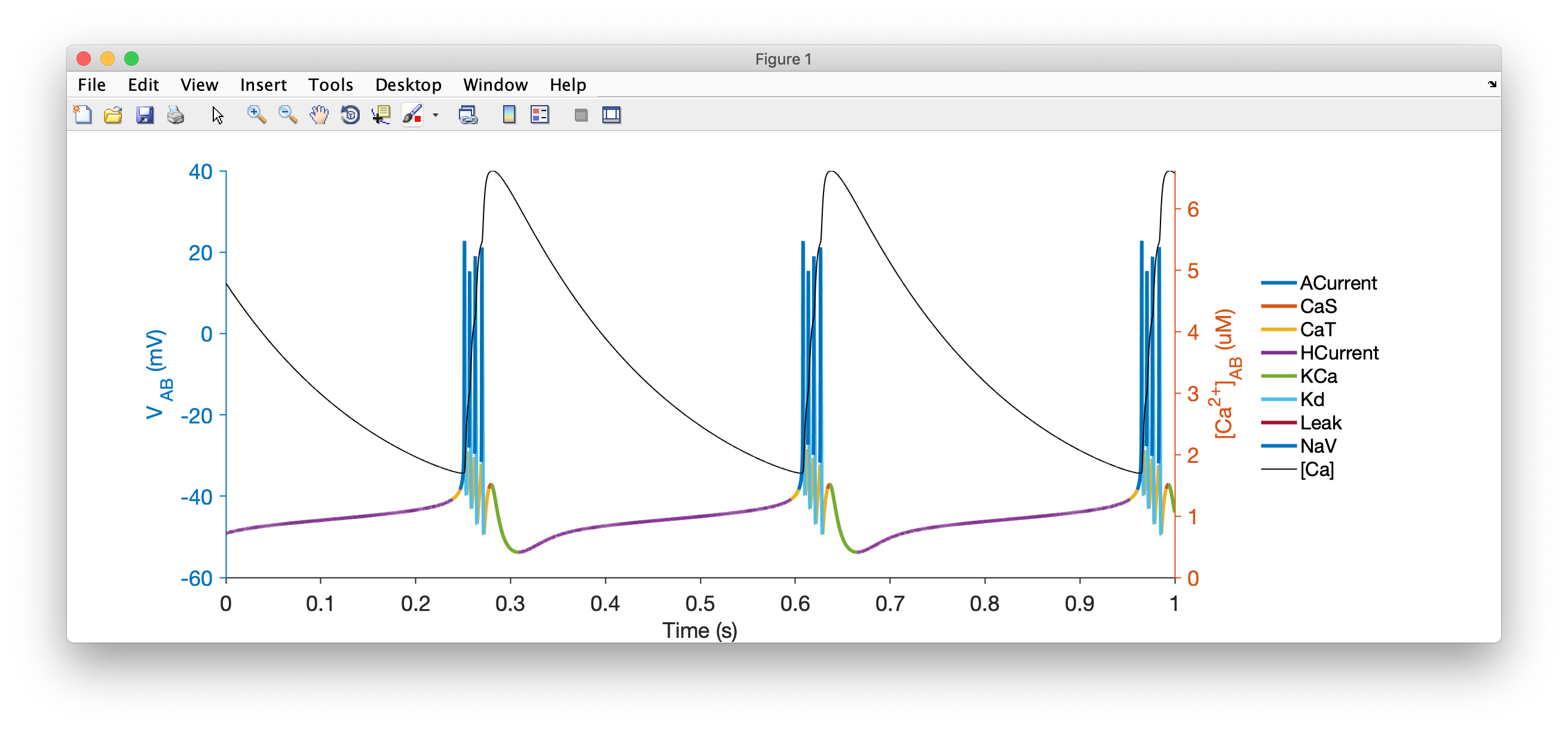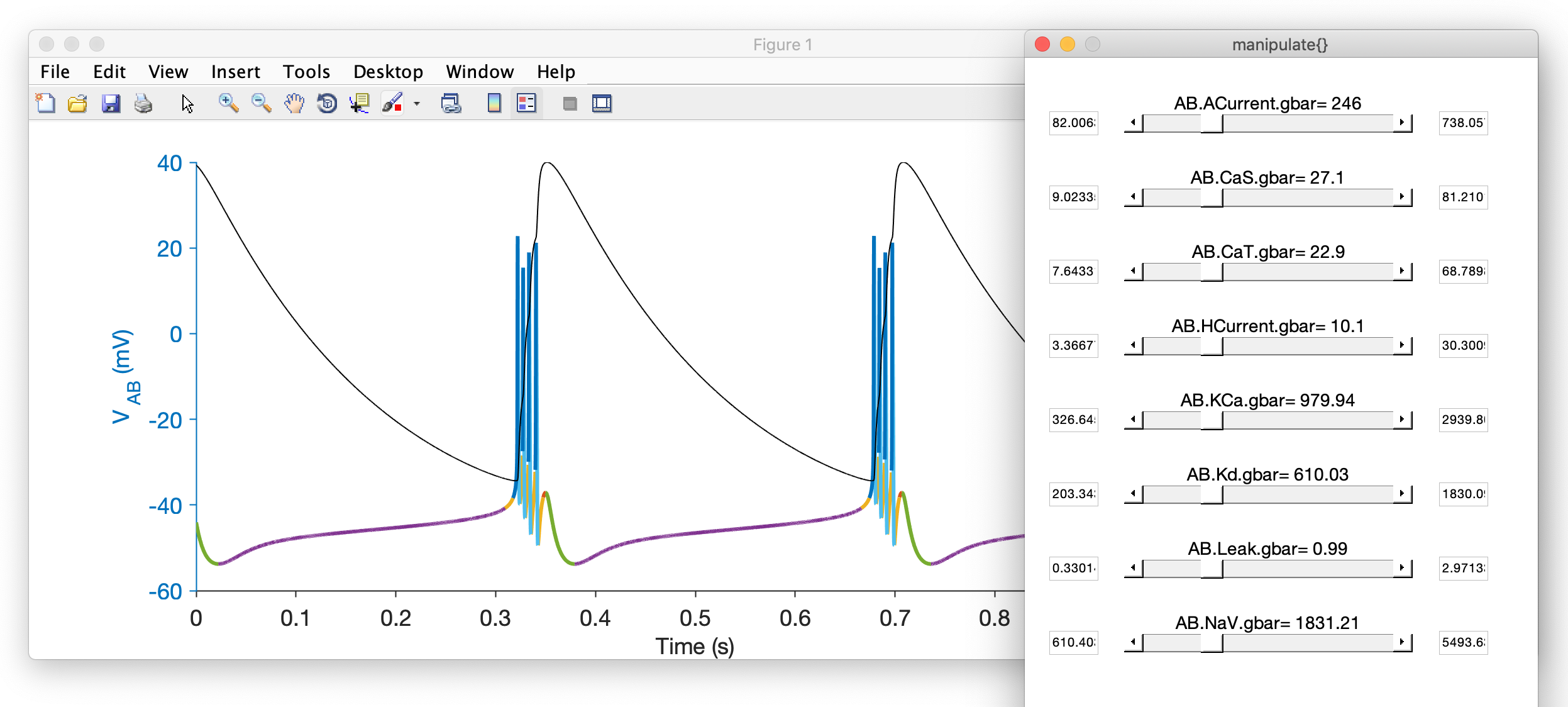In this tutorial we will use the built-in demos in xolotl to see what
it can do, and to play with some models. We assume that you have installed
xolotl correctly, and have verified your installation. If you haven't
done that already, click here and complete the steps on that page first.
First, let's go to the folder that contains
xolotl.go_to_examples
demo_bursting_neuron
You should see this plot appear:

You can see what effect changing the maximal conductances has on the voltage dynamics by running:
x.manipulate('*gbar')
This GUI will appear with sliders for maximal conductances of all the channels in the model. Try moving them around and seeing what happens with the voltage dynamics.

Note
Xolotl comes with several example scripts that illustrate various features of the simulator. They're all in a folder called "examples", and you can jump into this folder from anywhere using xolotl.go_to_examples. demo_stg is a script that creates a three-cell network and integrates it. demo_noise introduces various types of noise into a bursting neuron and shows what the effect is. Run through all these examples to get a sense of what xolotl can do.